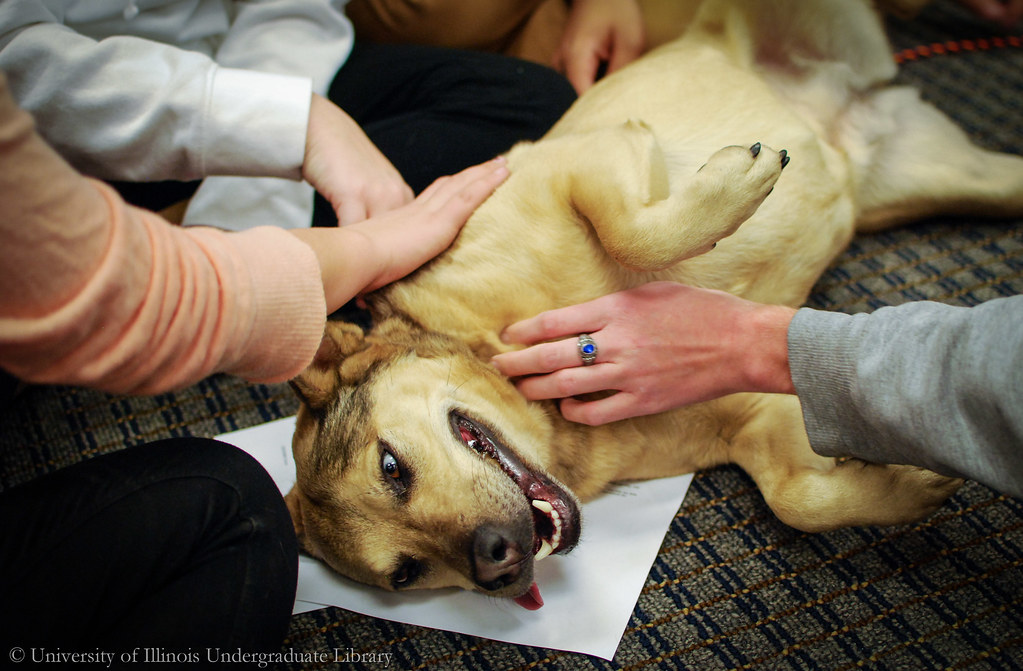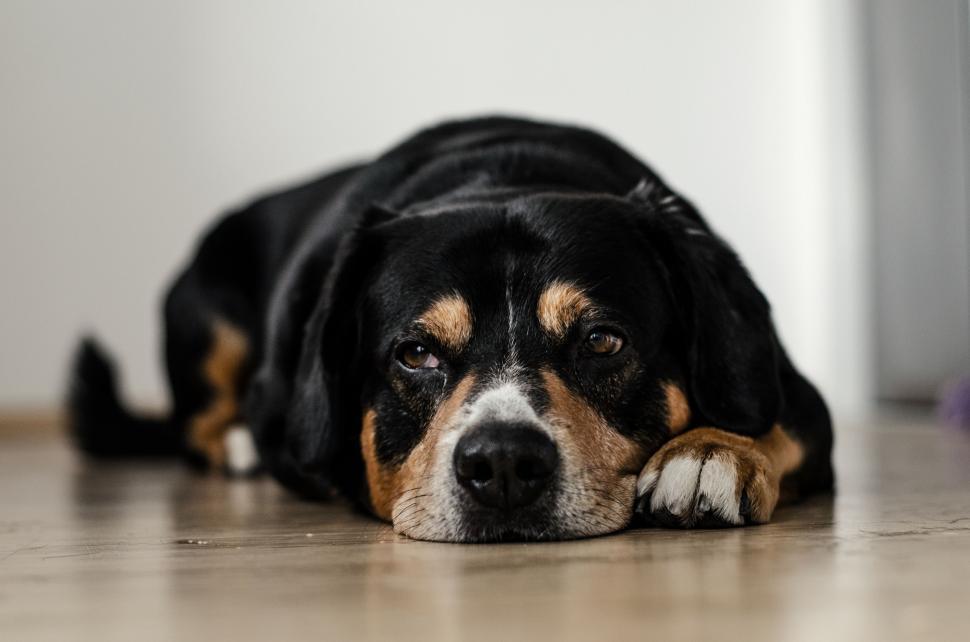How to Treat Dog Food Poisoning at Home
Dog food poisoning can be a frightening experience for any pet owner. It occurs when dogs ingest harmful substances, leading to various health issues.
Recognizing symptoms early is crucial. Common signs include vomiting, diarrhea, weakness, and sometimes even seizures. Swift action is vital to treating dog food poisoning at home, as timely intervention can greatly aid recovery.
This blog aims to guide you through effectively treating dog food poisoning at home. We’ll cover essential steps you can take to help your dog during this challenging time. From assessing the situation to contacting your veterinarian, each step is critical to your pet’s recovery process.
You’ll learn about fluid management to maintain hydration, using activated charcoal to safely absorb toxins, and appropriate diet modifications for easier digestion. We’ll also discuss preventative measures to avoid future incidents.
By the end of this blog, you’ll feel more confident in recognizing and responding to dog food poisoning. While home treatment can be beneficial, always seek professional veterinary advice, especially in severe cases. Let’s ensure your furry friend gets the care they need promptly and effectively.
Steps for How to Treat Dog Food Poisoning at Home

Dealing with dog food poisoning requires swift action and careful management. Here’s a comprehensive approach to effectively treating your dog at home:
1. Assessing the Situation
Dog food poisoning can manifest in various ways, depending on the toxin ingested and the dog’s size and health. Assess the severity of the situation by closely observing your dog for symptoms such as:
- Vomiting (especially multiple times or with blood)
- Diarrhea (often bloody or watery)
- Lethargy or weakness
- Excessive drooling
- Abdominal pain or bloating
- Seizures, tremors, or collapse (in severe cases)
The severity and type of symptoms will help you determine the urgency of treatment and whether immediate veterinary care is necessary.
2. Contacting Your Veterinarian
Consulting a veterinarian is crucial, even if you manage treatment at home. Speak with your veterinarian or a veterinary emergency clinic for professional guidance. They can offer precise guidance depending on the toxin involved, the severity of symptoms, and your dog’s overall health.
- Describe the symptoms and provide details about the suspected toxin or food ingested.
- Follow their advice on initial steps, such as inducing vomiting or administering activated charcoal.
3. Home Treatment Protocol
a. Fluid Management:
- Hydration is paramount. Give your dog tiny quantities of water regularly to prevent dehydration.
- Use electrolyte solutions like Pedialyte to restore electrolyte balance, especially if vomiting or diarrhea persist.
b. Inducing vomiting (if instructed by the vet):
- Inducing vomiting may be recommended within a specific timeframe after ingestion of certain toxins (e.g., chocolate, grapes/raisins).
- Your vet will guide you on the safe method and appropriate hydrogen peroxide dosage.
c. Activated Charcoal Administration:
- Administer activated charcoal to help bind toxins in the stomach and prevent absorption into the bloodstream.
- The recommended dose is typically 1 gram per pound of body weight. Mix with water and administer orally.
d. Feeding and Diet Modifications:
- After vomiting has subsided, introduce bland, easily digestible foods such as boiled chicken (skinless, boneless) and plain rice.
- Avoid feeding rich or fatty foods that could further irritate the stomach.
e. Monitoring and Rest:
- Monitor and watch for any changes in symptoms or behavior, especially in the first 24-48 hours.
- Establish a calm, cozy space for relaxation and recovery. Limit activity to allow for healing.
Preventing Dog Food Poisoning in the Future

- Storing and Handling Food:
- Store pet food in sealed containers in a secure location that is out of reach of pets and children.
- Avoid leaving food unattended where pets can access it, especially during gatherings or parties.
- Choosing Safe Foods:
- Select commercial pet foods from reputable brands known for stringent quality control and safety standards.
- When preparing homemade diets, research safe ingredients and avoid known toxins like onions, garlic, grapes/raisins, chocolate, and xylitol.
- Educating Others:
- Share your experiences and knowledge about common pet toxins and preventive measures with friends, family, and fellow pet owners.
- Encourage responsible pet ownership practices, including regular vet check-ups and awareness of potential hazards.
By following these detailed steps and preventive measures, you can effectively manage dog food poisoning at home and reduce the risk of future incidents. Always prioritize your dog’s health and seek professional veterinary advice promptly for any concerns or worsening symptoms.
What is dog food poisoning?
Food poisoning refers to ingesting substances that harm dogs and lead to various health problems. It can occur when dogs consume toxic foods, chemicals, medications, or spoiled substances. Recognizing the symptoms and understanding the common sources of poisoning are crucial for prompt treatment and prevention.
Dog food poisoning occurs when dogs consume substances that are toxic to their bodies. These toxins interfere with normal bodily functions and can cause signs that range from minor to severe, depending on the amount ingested and the substance’s toxicity.
Common causes of dog food poisoning include:
- Toxic Foods: Certain human foods are poisonous to dogs. These include chocolate, onions, garlic, grapes, raisins, macadamia nuts, and products containing xylitol (an artificial sweetener). These substances contain compounds that can disrupt a dog’s metabolism, damage organs like the kidneys or liver, or affect the nervous system.
- Chemicals and Household Substances: Dogs may accidentally ingest household items such as cleaning products, pesticides, fertilizers, and certain plants (like lilies, azaleas, and tulips) that are toxic to them. These drugs may result in a variety of symptoms, from gastrointestinal upset to organ damage or failure.
- Spoiled or Contaminated Food: Moldy or spoiled food, including pet food that has passed its expiration date or is improperly stored, may contain bacteria or toxins that can harm dogs when ingested.
- Medications: Ingesting medications intended for humans or certain veterinary medications not prescribed for the dog can lead to poisoning. Dogs are particularly sensitive to medications like non-steroidal anti-inflammatory drugs (NSAIDs), acetaminophen (Tylenol), and antidepressants.
Common sources of food poisoning in dogs:
- Chocolate includes theobromine and caffeine, both of which are toxic to dogs. The symptoms of chocolate poisoning include seizures, tremors, hyperactivity, diarrhea, vomiting, and possibly fatal cardiac rhythms.
- Raisins and grapes: These foods may contribute to renal failure, even minute levels in dogs. Symptoms may include vomiting, diarrhea, lethargy, and decreased urine production.
- Onions and Garlic: Certain foods have ingredients that can harm a dog’s red blood cells and cause anemia. Symptoms may include weakness, lethargy, pale gums, and increased heart rate.
- Xylitol: Found in sugar-free gum, candies, certain peanut butter, and other sugar-free products. Xylitol can cause blood sugar levels to plummet sharply levels (hypoglycemia) and liver failure in dogs. Symptoms may include weakness, vomiting, seizures, and collapse.
Understanding these common sources and specific toxins is crucial for preventing dog food poisoning. Pet owners should keep harmful substances out of reach and educate themselves about potential dangers. Prompt veterinary care is essential if poisoning is suspected to minimize the risk of serious health complications for your dog.
Recognizing Symptoms of Dog Food Poisoning
Signs to Watch For
If a dog consumes anything poisonous, it may result in a range of symptoms that differ in intensity. It’s essential to watch for these common signs of dog food poisoning:
- Vomiting: Persistent or repeated vomiting, especially if it contains blood or looks unusual.
- Diarrhea: Loose stools or diarrhea may contain blood or appear unusually colored.
- Lethargy: Unusual tiredness or lack of energy, where your dog seems unusually sluggish or less active than usual.
- Loss of Appetite: Refusal to eat or interest in food.
- Excessive Drooling: Drooling more than usual may indicate nausea or discomfort.
- Abdominal Pain: symptoms of unease such as clinging, fidgeting, or unwillingness to be touched in the belly.
- Tremors or Seizures: In severe cases, dogs may experience tremors (shaking) or seizures, requiring immediate medical attention.
When to Seek Veterinary Care

It’s crucial to seek prompt veterinary care If you think your dog may have consumed anything poisonous:
- Time Sensitivity: Some toxins can rapidly cause severe symptoms, so quick action is essential.
- Professional Evaluation: Veterinarians can diagnose the toxin and provide appropriate treatment to minimize harm.
- Supportive Care: They can administer medications, fluids, or other treatments to help your dog recover.
- Monitoring: Veterinarians can monitor your dog’s condition closely and intervene if complications arise.
Emphasize the importance of prompt, professional help to guarantee the greatest result for your dog’s health and well-being. Even if symptoms seem mild initially, toxins can have delayed effects or worsen over time, making early intervention crucial.
YOU MAY ALSO LIKE:
How to Soften Dog Food
How to Keep Dogs Out of Cat Food
How to Give Dog Pills Without Food
How to Get my Dog to Eat Dry Food
How to Keep Ants Out of Dog Food
How Much Does Dog Food Cost
How Long to Soak Dog Food
How Much Homemade Dog Food to Feed
How Much Wet Food to Feed a Dog
How to Transition Dog Food
How to Stop Food Aggression in Dogs Towards Other Dogs
How many cups of food should I feed my dog?
How to Stop Food Aggression in Dogs
How Many Cups in a Pound of Dog Food
How Long Does it Take a Dog to Digest Food
Why is My Dog Always Hungry
How Much Protein is in Dog Food?
How to Make Dog Food
how long to feed dog puppy food
What is The Cost to Make Homemade Dog Food?
How to Make Homemade Raw Dog Food
How to Make Homemade Dry Dog Food
How to Prepare Dog Food at Home for Senior Dogs
How to Train a Dog That is Not Food-Motivated
How Much Food Should I Feed
How To Store Dog Food
How Much Time Can a Dog Survive Without Consuming Water
How Long Can a Dog Survive Without Food?

